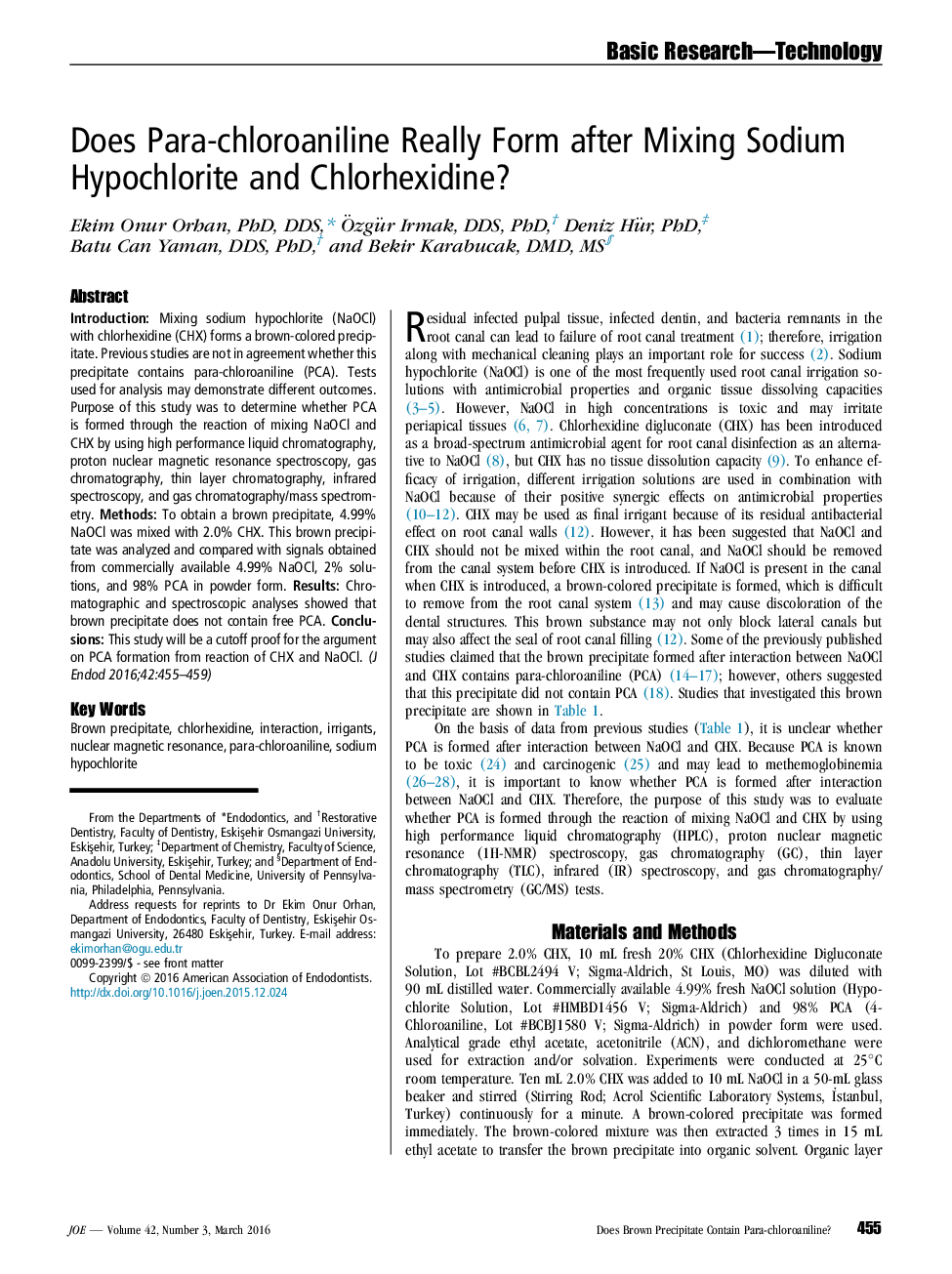| Article ID | Journal | Published Year | Pages | File Type |
|---|---|---|---|---|
| 3147934 | Journal of Endodontics | 2016 | 5 Pages |
•Precipitation occurring as a result of mixing sodium hypochlorite and chlorhexidine digluconate does not contain para-chloroaniline.•Mass spectrometry may not be valid to detect availability of para-chloroaniline.
IntroductionMixing sodium hypochlorite (NaOCl) with chlorhexidine (CHX) forms a brown-colored precipitate. Previous studies are not in agreement whether this precipitate contains para-chloroaniline (PCA). Tests used for analysis may demonstrate different outcomes. Purpose of this study was to determine whether PCA is formed through the reaction of mixing NaOCl and CHX by using high performance liquid chromatography, proton nuclear magnetic resonance spectroscopy, gas chromatography, thin layer chromatography, infrared spectroscopy, and gas chromatography/mass spectrometry.MethodsTo obtain a brown precipitate, 4.99% NaOCl was mixed with 2.0% CHX. This brown precipitate was analyzed and compared with signals obtained from commercially available 4.99% NaOCl, 2% solutions, and 98% PCA in powder form.ResultsChromatographic and spectroscopic analyses showed that brown precipitate does not contain free PCA.ConclusionsThis study will be a cutoff proof for the argument on PCA formation from reaction of CHX and NaOCl.
